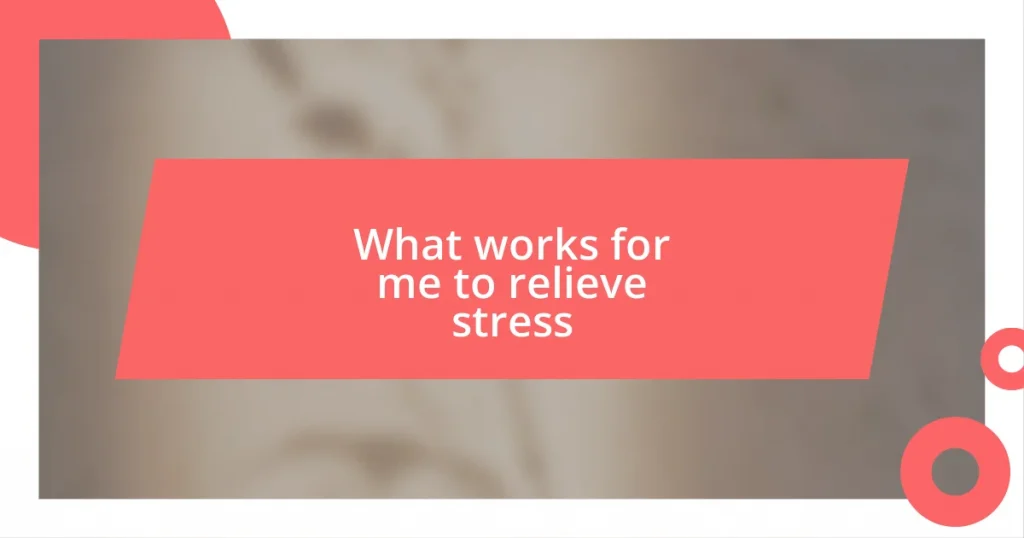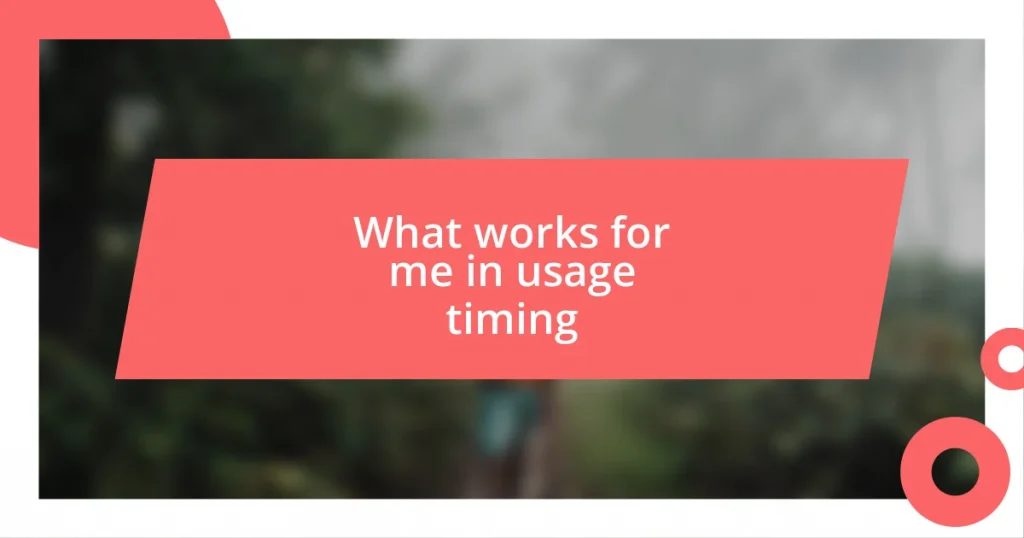Key takeaways:
- Understanding stress is essential as it affects our emotional and physical health, and recognizing its signs can lead to better management.
- Effective stress relief techniques include deep breathing, physical activity, mindfulness, creativity, and connecting with loved ones, enriching one’s coping toolkit.
- Creating a supportive environment through positive surroundings, uplifting relationships, and setting boundaries significantly enhances stress management and personal well-being.
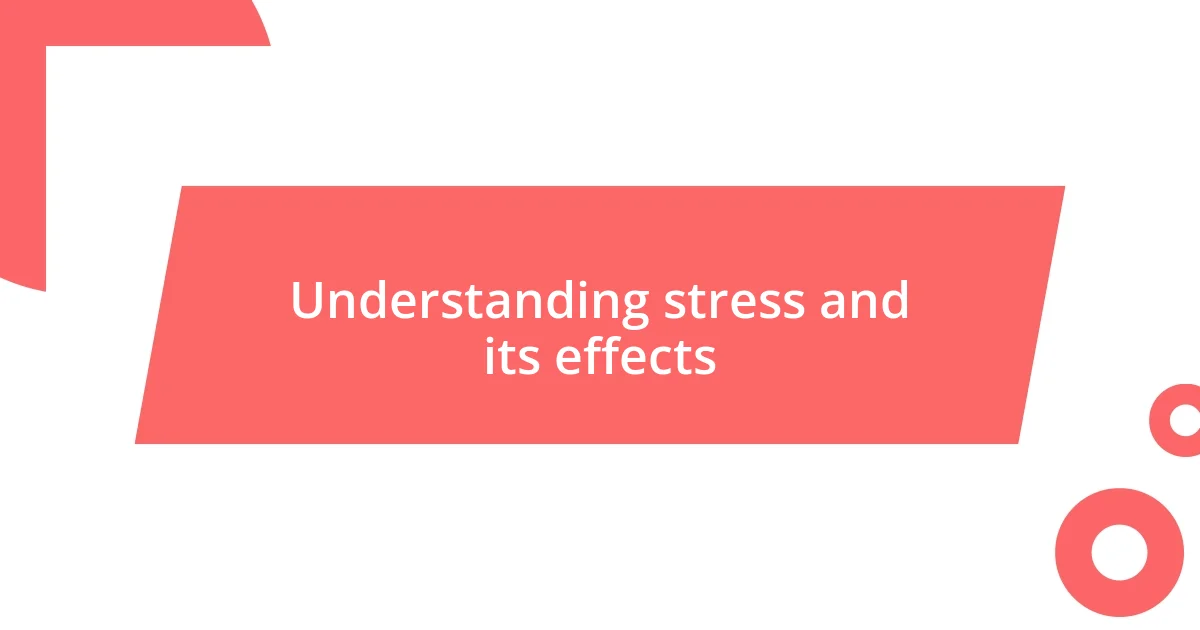
Understanding stress and its effects
Stress is a natural response our bodies have to challenges, but its effects can range from a fleeting sense of pressure to chronic health issues. I remember a time when an overwhelming work project had me feeling like I was walking a tightrope. It made me realize that while a little stress can motivate us, too much can lead to serious emotional and physical consequences, like anxiety or even heart problems.
Consider this: how often do we ignore the signs our body is sending us? I used to brush off fatigue, thinking I just needed more coffee, but I learned that sustained stress can drain our energy and cloud our judgment. It’s like driving a car with the check engine light on—if you don’t address what’s wrong, things can get worse.
When stress becomes a constant companion, it can leave us feeling isolated and overwhelmed. I’ve felt that heavy weight in my chest during tough times, sometimes not knowing how to lift it. It’s so important to recognize that while stress is part of life, understanding its effects empowers us to take action and seek healthier coping mechanisms.
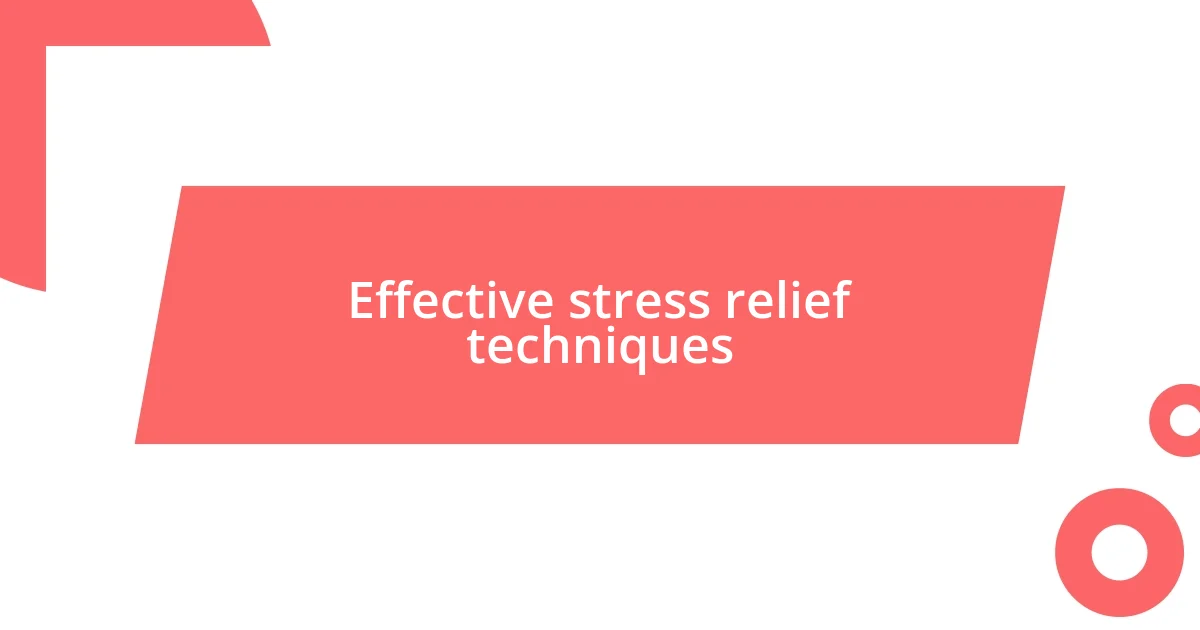
Effective stress relief techniques
Finding methods to relieve stress can be transformative. One thing I’ve discovered is the simplicity of just stepping outside for a bit of fresh air. There were days when I felt like a pressure cooker, ready to blow. Taking a short walk, feeling the sun on my face, allowed me to clear my mind and reset my emotions. It’s amazing what just a few moments in nature can do for our perspective.
Here are some effective stress relief techniques that I’ve personally found helpful:
-
Deep Breathing: I often take a few minutes to focus on my breath. Inhale deeply through the nose and exhale slowly through the mouth. This simple practice calms my racing thoughts.
-
Physical Activity: Going for a jog or hitting the gym can be a great way to release pent-up energy and elevate my mood.
-
Mindfulness Meditation: I’ve started allocating a few minutes each day to sit in silence and meditate. It helps me ground myself and appreciate the present moment.
-
Creative Outlets: Engaging in creative activities, like painting or writing, has been incredibly therapeutic for me. It’s a way to express my feelings and let go of stress.
-
Connecting with Loved Ones: A phone call or even a chat over coffee with a friend often brightens my mood and reminds me I’m not alone in this.
Each technique resonates differently depending on where I am mentally and physically, but exploring these has enriched my stress management toolkit.
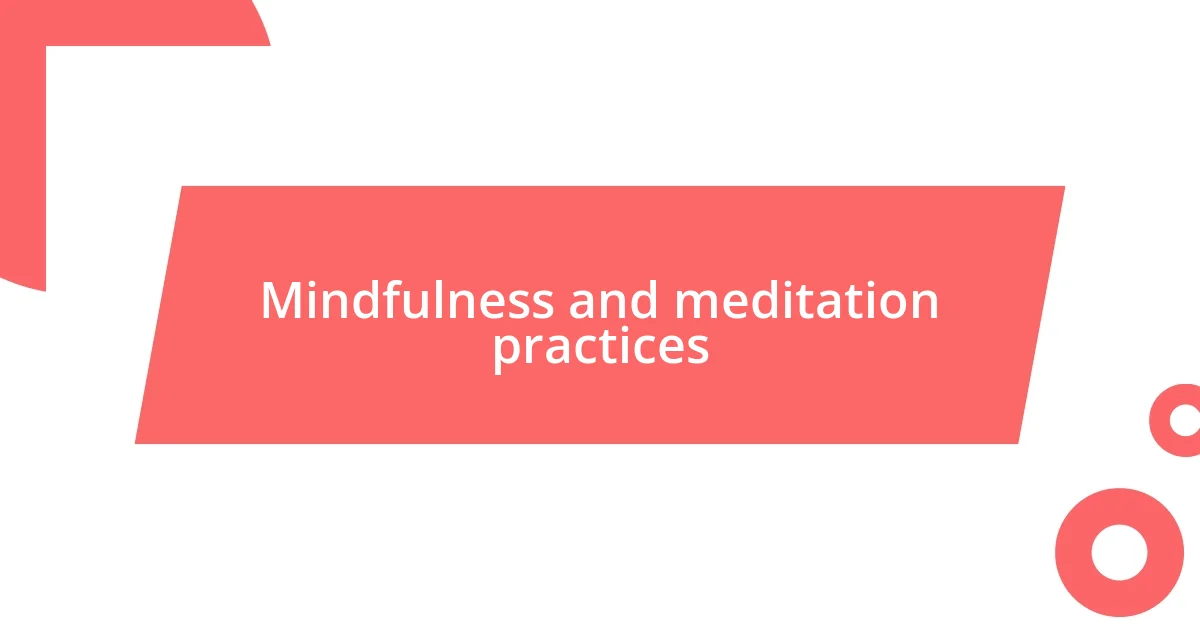
Mindfulness and meditation practices
Mindfulness and meditation have become cornerstones in my routine for managing stress. I remember the first time I tried guided meditation. I settled into a comfortable position, closed my eyes, and let the soothing voice guide my thoughts. It wasn’t just about emptying my mind; it was about observing my thoughts without judgment. I felt a wave of relaxation washing over me that I hadn’t experienced in ages.
Incorporating mindfulness into my day doesn’t have to be a formal affair. Sometimes, as I wash the dishes, I focus solely on the sensation of water running through my fingers and the sound of bubbles popping. It transforms a mundane chore into a moment of peace. I find that by fully immersing myself in simple tasks, I can create little pockets of calm amidst a busy day.
Through my journey with mindfulness practices, I’ve discovered the value of consistency. I strive to set aside just ten minutes in the morning to sit quietly and breathe deeply. Every session may not feel profound, but even on the less impactful days, I notice that I approach challenges with greater clarity and resilience. This small ritual has become a treasured part of my day, ultimately guiding me through stress with a newfound sense of balance.
| Practice | Benefits |
|---|---|
| Guided Meditation | Helps calm the mind and reduces stress through guided visualization and deep relaxation techniques. |
| Mindful Breathing | Enhances focus and lowers anxiety by bringing attention back to the present moment. |
| Everyday Mindfulness | Encourages being present in daily activities, turning mundane tasks into moments of tranquility. |
| Consistent Practice | Builds resilience against stress by reinforcing a sense of calm and clarity over time. |
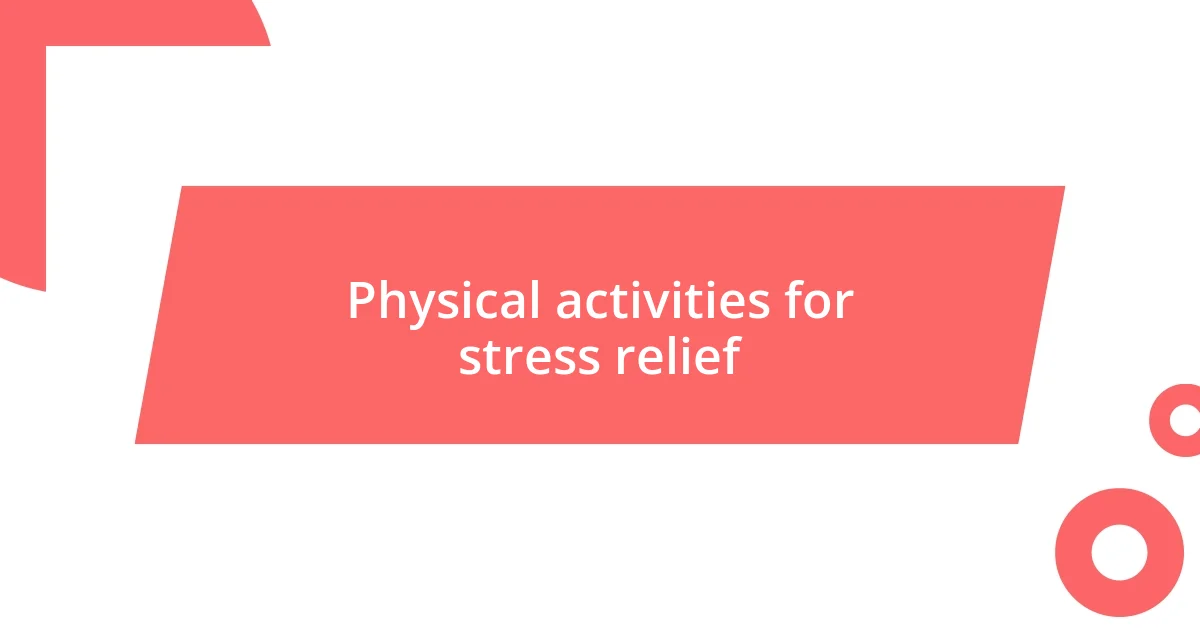
Physical activities for stress relief
Engaging in physical activities has been a game-changer for me when it comes to stress relief. I remember the first time I signed up for a dance class; I was both nervous and excited. As I jumped around, letting the rhythm lead me, I felt the weight of my worries lift, replaced by sheer joy. Isn’t it incredible how movement can unlock such positive feelings? Whether it’s a spontaneous dance in my living room or a brisk jog in the park, choosing to get my body moving transforms my emotions almost instantly.
Weightlifting has also carved its place in my stress-relief toolkit. There’s something empowering about pushing my limits, both mentally and physically. Each session at the gym feels like a small victory, where I leave behind the chaos of my day as I focus on my form and breathing. Plus, it has a ripple effect: I come home feeling accomplished and ready to tackle whatever challenges await me. Have you ever noticed how proud you feel after a workout? That sense of achievement is a powerful antidote to stress.
Yoga has become another physical outlet that I cherish deeply. During a recent class, I felt myself sinking into a pose and, at that moment, it was as if the world faded away. The combination of stretching and mindful breathing helped me connect with my body like never before, allowing me to release tension I hadn’t even realized I was holding. I often ask myself how I can find that same stillness outside of yoga, knowing that movement and mindfulness together can create a sanctuary for my mind.
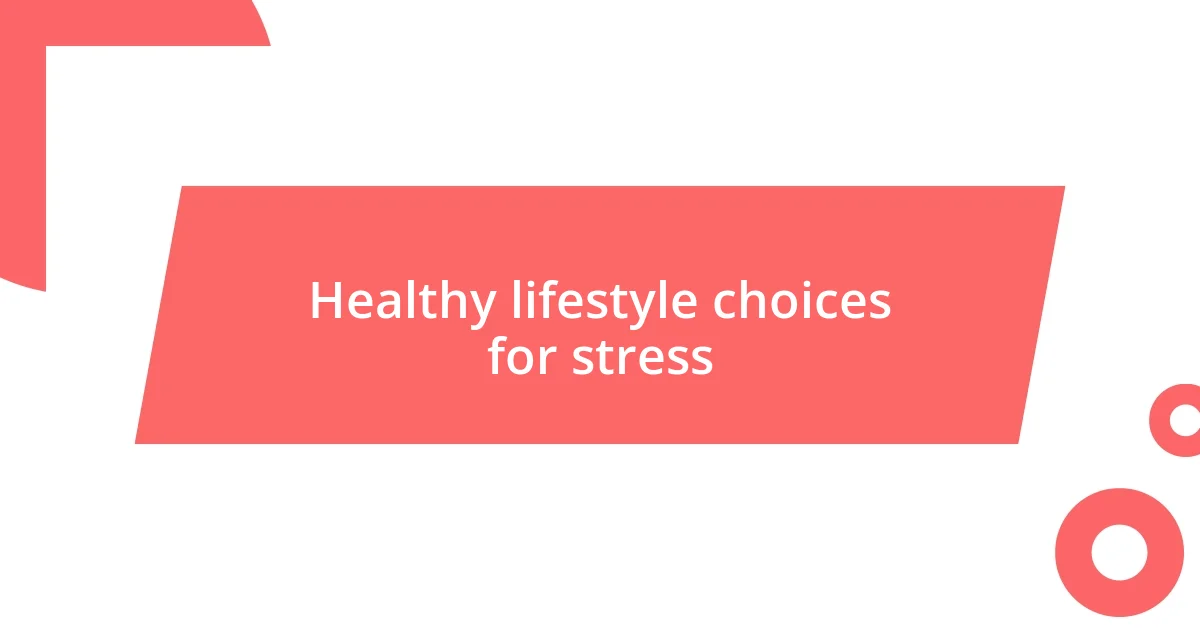
Healthy lifestyle choices for stress
Making healthy lifestyle choices has been a pivotal element in my approach to stress management. For instance, I’ve found that what I eat plays a crucial role in how I feel. Last summer, I decided to swap out those late-night snacks for fruits and nuts, and the impact was remarkable. I couldn’t believe how much of a difference nourishing my body with whole foods made; I felt lighter, both physically and mentally. Have you ever noticed how certain foods can either weigh you down or lift your spirits?
Sleep, too, has become a non-negotiable aspect of my routine. When I began prioritizing solid sleep, my stress levels took a noticeable dip. I recall one particularly exhausting week where I pulled two all-nighters for work. The fog in my head didn’t help me tackle stress; instead, it amplified my worries. This experience taught me that sufficient rest doesn’t just rejuvenate the body—it revitalizes the mind, making it easier to handle whatever life throws my way.
Lastly, I have learned that staying socially connected plays a significant role in combating stress. I remember a time when I isolated myself during a tough season. It was during a coffee catch-up with a close friend that I realized the power of simply being heard. Sharing my feelings and laughter over a cup lifted the heaviness I had been carrying. Have you ever felt lighter just from a good conversation? Connecting with others not only provides perspective but also facilitates a shared sense of humanity in our struggles.
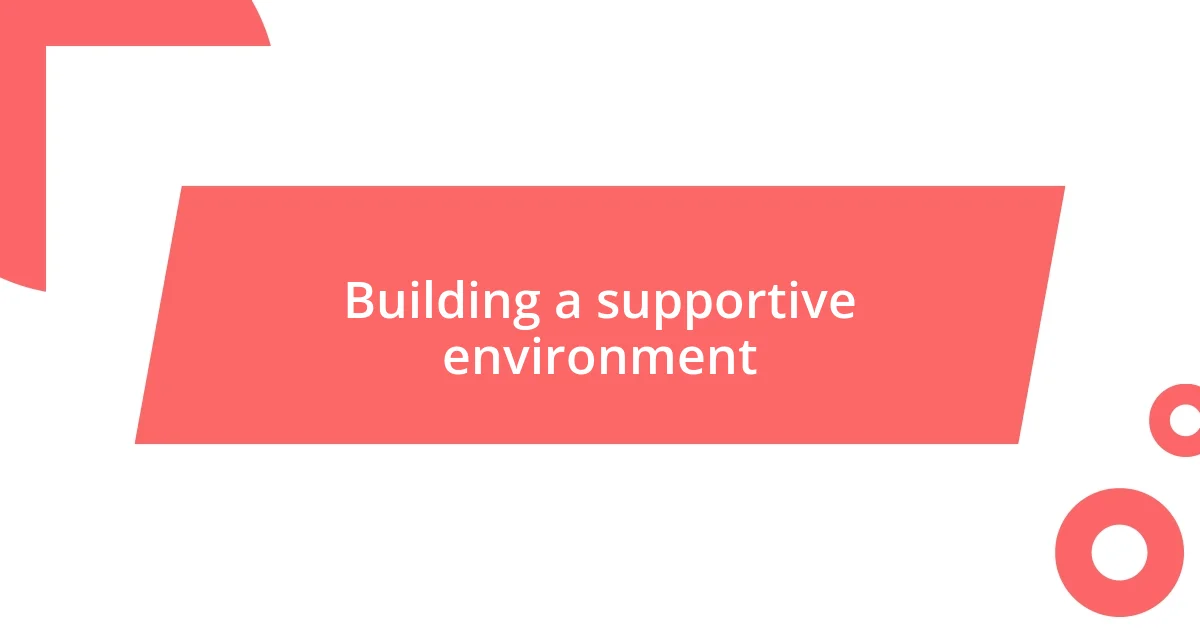
Building a supportive environment
Creating a supportive environment has been a transformative journey for me. I used to underestimate how my surroundings could impact my mood until I made a conscious effort to surround myself with positivity. A few months ago, I rearranged my workspace to incorporate plants and personal photos. The difference was striking; the colors and life around me brought an uplifting energy that spoke to my heart. Have you ever noticed how a simple change in your environment can shift your perspective?
Another aspect I’ve focused on is surrounding myself with people who uplift and inspire me. I remember a time when I participated in a group project with friends who shared similar passions. The synergy we created was incredible! Our shared laughter and encouragement made tackling challenges seem less daunting. Knowing I had a supportive circle to lean on during stressful times was invaluable. Don’t you feel more capable when you have your cheerleaders by your side?
Lastly, I’ve also realized the importance of setting clear boundaries that foster respect and support. It wasn’t easy at first; saying “no” felt like an uphill battle. But I remember one specific evening when I turned down an invitation that would have stretched me too thin. The relief I felt afterward taught me that prioritizing my well-being doesn’t mean shutting others out—it means inviting only those experiences that nurture my spirit. Who knew that a simple act of self-care could make such a profound impact on my stress levels?










